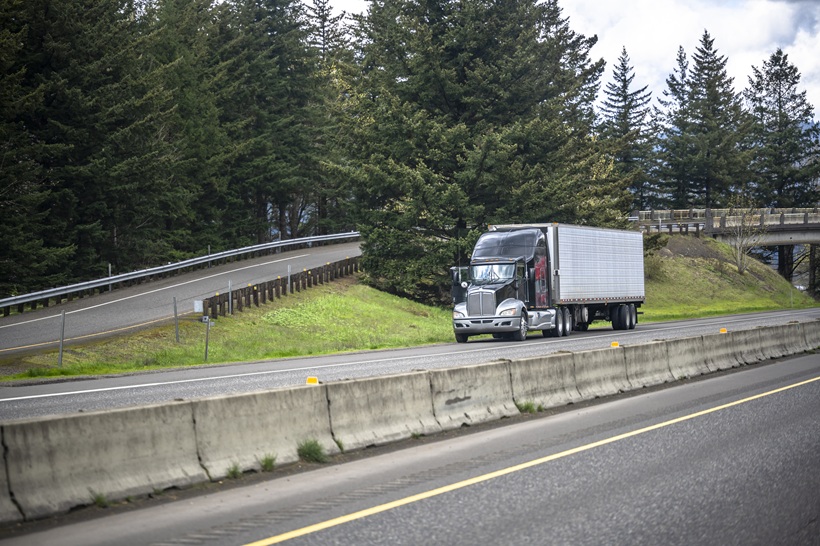
Are More Stringent ELD Requirements on the Way?
The Electronic Logging Device mandate of December 2017 was one of the most important events for transportation technology this century. Because of it, cumbersome paper driver logs became a thing of the past, and telematics capabilities powered by ELD has helped carriers supercharge their productivity and boost profitability.
Even though December 18, 2017, was less than seven years ago, the era of backlash against the mandate might as well be a lifetime ago. And yet, recent developments have reminded the industry that some still run afoul of federal compliance rules – and that the ELD mandate won’t stay static forever.
In this blog, we’ll look at the reason a federal safety authority recommends tightening ELD rules, how ELD regulations might change, and what those developments could mean for carriers.
Why the NTSB wants the FMCSA to tighten ELD requirements
On August 28, the National Transportation Safety Board (NTSB) issued a report from a fatal accident involving a tractor-trailer and a bus that killed three bus occupants on Interstate 64 in Virginia in December 2022.
The NTSB said driver fatigue contributed to the collision, which isn’t too rare for fatal accidents. However, the Safety Board found that the Illinois-based carrier “created fictitious driver accounts in the electronic logging device system and enabled drivers to operate their vehicles for hours in excess of federal regulations.”
After an investigation, the driver of the tractor-trailer was found to have repeatedly exceeded Hours of Service limits before the wreck. The carrier who helped create the inaccurate HOS logs was fined by the Federal Motor Vehicle Safety Administration and given a conditional safety rating.
The NTSB endorsed the FMCSA modifying ELD software requirements to include an audit log with date, driver login time, who logged them in, names of those who edited the log, driver’s license numbers, and active driver list changes. The Safety Board said in the crash report, “a data-entry tracking history in ELD software can increase accountability and transparency and can deter motor carrier personnel from making false entries aimed at circumventing HOS regulations.”
ELD changes were probably on the way regardless
Earlier in the summer, before the NTSB’s report on the fatal Virginia crash, the FMCSA disclosed that it would likely revise ELD rules in June 2025. While the FMCSA is considering several changes, including items related to ELD malfunctions, the process of removing devices from the approved list, technical specs, and how ELDs are certified, the most controversial item will likely be if the FMCSA decides to mandate ELDs for pre-2000 engines.
Currently, trucks with engines manufactured before 2000 are not required to have ELDs, regardless of whether the truck has a glider kit to put an older engine and transmission in a newer cab and chassis. Skeptics of mandating ELDs for glider kits with pre-2000 engines believe that the relatively small number of those vehicles on the road do not cause a threat to road safety.
What do these possible changes mean for carriers?
A mid-2025 regulation changing the pre-2000 ELD exemption will mean more to small carriers or owner-operators and not larger carriers at scale who are likely running newer equipment. The changes that the NTSB wants to see from the FMCSA could add another layer of oversight to compliance and HOS processes in fleets.
Yet, a key takeaway from the tragic Virginia wreck is that carriers must be above board with their safety and compliance standards at all times and at all levels of leadership. The CEO and HOS manager at the carrier found at fault each denied knowing about the ELD scheme. Even if taken at face value, they were still responsible for the carrier’s non-compliance. By falling afoul of the rules, the carrier will have a lot of work – and cost – to prove that it has competent safety standards in place going forward.
The accident and possible audit changes to ELDs show exactly why the rules exist in the first place – to keep everyone on the road safe, not just carriers and their employees. When carriers cut corners, the consequences affect lives and business operations.
Fleets that take safety and HOS compliance seriously – and have for years – may have new ELD rules to comply with in the coming years, but they will also be well-positioned to adapt, ensuring the safety of their drivers and everyone on the road remains a top priority.
TL;DR
The NTSB is pushing for stricter ELD requirements after investigating a fatal 2022 Virginia crash where a carrier created fake driver accounts to circumvent Hours of Service limits. The Safety Board wants audit logs mandated in ELD software to track all data entries and edits for greater accountability. Meanwhile, the FMCSA was already planning ELD rule revisions for June 2025, potentially including requiring ELDs for trucks with pre-2000 engines, which are currently exempt. These changes would primarily impact smaller carriers and owner-operators using older equipment. Carriers who cut corners on safety compliance face serious consequences, while those with strong compliance standards will adapt easily to new requirements that prioritize road safety for everyone.



